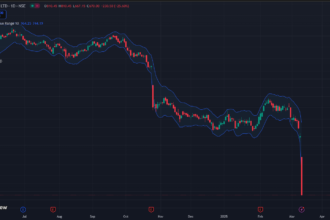The crisis unfolded after the IndusInd Bank made a shocking announcement on March 10, revealing issues in its forex derivative transactions.
The bank admitted that an internal review had uncovered discrepancies in its foreign exchange hedging activities, raising alarms about its risk management practices. The financial impact of this revelation is expected to be a massive ₹15,800 crore post-tax hit in the March quarter.
In simpler terms, the bank will lose a significant portion of its net worth, making investors nervous about its stability.
As soon as the news broke, analysts started reassessing their stance on IndusInd Bank. Citi, a global brokerage, maintained a “buy” rating but slashed its price target from ₹1,378 to ₹1,160. The firm also cut its earnings forecast for FY25 by 25%, citing increased risk perception. Macquarie also retained a “buy” rating with a price target of ₹1,210 but expressed concerns over the bank’s internal processes and governance.
Other brokerages took a more cautious approach. Emkay Global downgraded the stock to “add” from “buy” and reduced its price target by 22% to ₹875. DAM Capital also shifted to a “neutral” stance and cut its target from ₹1,200 to ₹920. Nuvama, taking an even more bearish view, downgraded IndusInd Bank to “reduce” and revised its price target to ₹750, citing credibility issues and leadership uncertainty.
Adding to the uncertainty, the bank’s CFO resigned just before Q3 earnings, and the CEO was given only a one-year extension instead of the expected 3 years. Analysts believe this reflects the RBI’s lack of confidence in the current leadership, further shaking investor trust.
With so many questions around governance, compliance, and financial stability, IndusInd Bank now faces a tough road ahead. Investors will be closely watching how the bank handles this crisis and whether it can regain confidence in the market.







